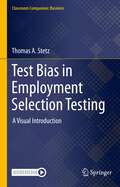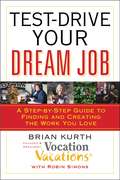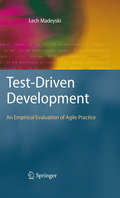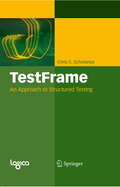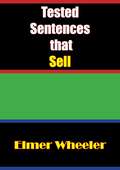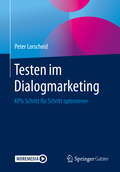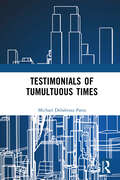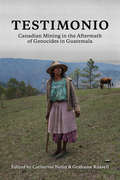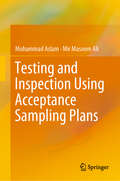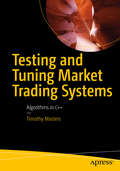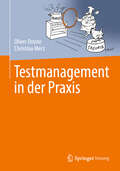- Table View
- List View
Tesla Motors
by Eric J. Van Den SteenIn mid-2013, Tesla Motors was riding a wave of success: It had launched its first really mass-produced car-the model S-to rave reviews; had recently raised first-year production targets; and had started taking orders for its next car, the Model X. Tesla seemed to be on its way to defying the skeptics and becoming the first US company to enter the car industry with a mass-produced car since WWII and the first to successfully launch a fully electric car. Or was it not?
Tesla Motors
by Eric Van Den SteenIn mid-2013, Tesla Motors was riding a wave of success: It had launched its first really mass-produced car-the model S-to rave reviews; had recently raised first-year production targets; and had started taking orders for its next car, the Model X. Tesla seemed to be on its way to defying the skeptics and becoming the first US company to enter the car industry with a mass-produced car since WWII and the first to successfully launch a fully electric car. Or was it not?
Tesla Motors (A): Financing Growth
by Stuart C. Gilson Sarah L. AbbottThe case analyzes the equity market value of Tesla Motors, the electronic car company founded and led by Elon Musk. Wall Street analysts are wildly divided on the future growth prospects for this company, and analysts' one year share price targets range from $160 to $500. The case explores in detail the valuation case made by two analysts covering Tesla, one a bull on the stock and one who is bearish. Students are asked to consider the arguments and the analytical approaches employed by each. Is Tesla a good investment or not?
Tesla Motors (B): Merging with SolarCity
by Stuart C. Gilson Sarah L. AbbottIn 2016, electric car manufacturer Tesla announced that it was making an offer to acquire solar panel manufacturer SolarCity in an all-stock offer worth $2.6 billion in Tesla stock. Tesla’s co-founder and CEO, Elon Musk, believed that the merger would generate significant cost and revenue synergies, based on his vision of the future of transportation, energy storage, and a “green” economy. However, most Wall Street analysts were highly skeptical of the deal, voicing concerns that the merger would burden Tesla with excessive debt and that Musk was using the deal to advance his personal interests (at the expense of public shareholders) and bail out Tesla. Concerns were raised over possible conflicts of interest, given that Musk owned over 20% of the stock, and sat on the board of directors of both companies. The viability of the merger was also questioned given that neither Tesla nor SolarCity had ever been profitable.
Tesla's Bid for SolarCity
by Charles C.Y. Wang Raaj ZutshiIn October 2016, Tesla asked its shareholders to ratify their $2.4 billion bid for SolarCity. Tesla had announced a series of large projects in the preceding months including the unveiling of the Model 3, the new Solar Roof, and pushing forward the opening of the Gigafactory. All of these projects required high upfront costs. Investors were left questioning the motives behind the acquisition of SolarCity, and the reality of approving the merger.
Tesla’s Bid for SolarCity
by Charles C.Y. Wang Raaj Zutshi"On October 12th, 2016, Tesla announced that shareholders from both Tesla Motors, Inc. (“Tesla”) and SolarCity Corporation (“SolarCity”) would votea to ratify the proposed merger of the two companies. The merger involved a $2.4 billion all-stock offer by Tesla to incorporate SolarCity into one of its subsidiaries, which valued SolarCity at $24.17 per share."
Test Bias in Employment Selection Testing: A Visual Introduction (Classroom Companion: Business)
by Thomas A. StetzThis book provides students with a concise introduction to test bias from a psychometric point-of-view without statistics. It uses easy to understand graphs to explain complex technical approaches to test bias giving readers a highly sought-after knowledge enabling them to be better consumers of tests.Studies performed by the Society for Human Resource Management (SHRM) consistently show that selection is a key competency for Human Resource (HR) professionals. Knowledge of test bias is a key component to effectively and legally performing this highly valued HR function. Unfortunately, test bias is rarely covered in HR classes or is presented in a highly technical manner geared to individuals with strong statistical and mathematical backgrounds. This book, requiring no previous statistical or mathematical knowledge, can be used as a supplemental textbook for any class that deals with selection, staffing, or measurement at the undergraduate or graduate level.
Test-Drive Your Dream Job: A Step-by-Step Guide to Finding and Creating the Work You Love
by Robin Simons Brian KurthIn TEST-DRIVE YOUR DREAM JOB, you'll discover how you can identify, explore and experience your dream job, and how or if you want to pursue it. Author Brian Kurth, founder of VocationVacations, offers professional, personal and financial perspectives on how to transition into a new career and turn your dream job into a reality without risking your current job or jeopardizing your financial stability. By following this practical and encouraging self-discovery guide, you will gain a better understanding of who you are now; what fulfills you both personally and professionally; how to get from Point A to Point B on the road to your dream job; or perhaps satisfy your curiosity and gain a deeper appreciation for where you are now in your life and your career. Brian Kurth is a sought-after expert on how to pursue and attain one's dream job. He has shared his wit and wisdom in appearances on NBC's TODAY Show, CNN, and FOX News, and has been featured in articles in the New York Times, the Wall Street Journal and Fortune Magazine. Many more regularly turn to Brian for his comments, advice and insights. A native of Madison, Wisconsin, Kurth lives in Portland, Oregon.
Test-Driven Development
by Lech MadeyskiAgile methods are gaining more and more interest both in industry and in research. Many industries are transforming their way of working from traditional waterfall projects with long duration to more incremental, iterative and agile practices. At the same time, the need to evaluate and to obtain evidence for different processes, methods and tools has been emphasized. Lech Madeyski offers the first in-depth evaluation of agile methods. He presents in detail the results of three different experiments, including concrete examples of how to conduct statistical analysis with meta analysis or the SPSS package, using as evaluation indicators the number of acceptance tests passed (overall and per hour) and design complexity metrics. The book is appropriate for graduate students, researchers and advanced professionals in software engineering. It proves the real benefits of agile software development, provides readers with in-depth insights into experimental methods in the context of agile development, and discusses various validity threats in empirical studies.
TestFrame: An Approach to Structured Testing
by Chris C. SchotanusOver 12 years ago Logica started the development of TestFrame®, a test method which enables organizations to develop and execute their tests in a structured way. Since then many new techniques have been developed, such as, most recently, "Service Oriented Architectures (SOAs)" or "Software as a Service (SaaS)" , requiring updates to test procedures and processes that seemed well-established. These trends have prompted Logica to update and renew the TestFrame® method. Chris Schotanus’ new book takes into account the recent developments and his presentation is focused on supporting daily test practice. Every step within this structured test method is dealt with exhaustively, providing the reader with the necessary details for successful software testing. Yet his book will not only help test personnel to improve effectivity, it will also serve as a way to improve efficiency through its strong focus on reuse. This makes TestFrame the practical guide to testing information systems for everyone involved in software testing – test developers, test managers, and staff charged with quality assurance.
Tested Sentences that Sell: Why The Sizzle Sells The Steak
by Elmer WheelerThis book describes the simple but effective methods that Elmer Wheeler has used in making two sales grow where only one grew before.The author is sales consultant for scores of prominent firms. He has tested thousands of word-combinations and selling points on millions of customers at the point of sale.He knows the selling points and techniques that will achieve results. He knows the ones that will fail.The author shows you how the slight twist of a phrase may make a difference between success and failure in selling a product.He shows you how to go about building up your own selling sentences—your own sales presentations—and how to test them on the customer.You will find this book intensely interesting and practical, for the author has filled it with stories of actual sales campaigns that have been built upon the use of tested sentences.The ideas in this book are making money for some of the best-known concerns in the country. They should make money for you.
Testen im Dialogmarketing: KPIs Schritt für Schritt optimieren
by Peter LorscheidDieses Buch zeigt, wie man Tests im Dialogmarketing durchführt, um den Erfolg einer Werbekampagne zu messen. Tests im Dialogmarketing sind ein Schlüssel zur Optimierung der Kommunikation – doch in der Praxis scheitern Tests häufig. Je nach Zielsetzung sind bei den Tests andere Kenngrößen als Testgrößen relevant. Der Autor erläutert, wie man von einer vagen Hypothese zum konkreten Test im Dialogmarketing kommt, den zur KPI passenden Test findet, durchführt und anschließend interpretiert.Im Kapitel zur Durchführung der Tests lässt sich der Rückgriff auf mathematische Formeln nicht vermeiden. Doch auch ohne Formelverständnis lassen sich alle Berechnungen mit Hilfe der verschiedenen Excel-Tools zu diesem Buch einfach nachvollziehen. Diese finden sich unter der Webseite https://www.springer.com/gp/book/9783658313333.Der InhaltMit Kennzahlen den Kampagnenerfolg messenVom Optimierungsansatz zum TestdesignA-B-Tests durchführen und interpretierenDer Weg zur praktischen Umsetzung
Testimonials of Tumultuous Times
by Michael Debabrata PatraThis collection of speeches delivered by Michael Debabrata Patra, Deputy Governor of the Reserve Bank of India (RBI), captures the dilemmas and trepidations of conducting monetary policy in India. The book covers a wide range of themes critical to central bankers and public policy, while chronicling the journey of the Indian financial system from fragility to resilience.Spread out over five years, these speeches mark a response to the multiple shocks that have impacted the Indian economy since 2020: the COVID-19 pandemic, the Russia-Ukraine war, and the aggressive monetary tightening by advanced economy central banks. It illustrates how India has positioned itself as a leader in many international endeavours and offers a futuristic assessment of two major developments with the potential to reshape humanity: climate change and the advent of the digital revolution and new technologies. The book thus enables readers to explore the complexities of monetary policy in a real-world context, understanding the rationale behind key decisions that have shaped India’s economic trajectory.Essential reading for postgraduate courses on the Indian economy and monetary policy, this book will be useful to students, economists, policymakers, financial market participants, and historians.
Testimonio: Canadian Mining in the Aftermath of Genocides in Guatemala
by Catherine Nolin Grahame RussellWhat is land? A resource to be exploited? A commodity to be traded? A home to cherish? In Guatemala, a country still reeling from thirty-six years of US-backed state repression and genocides, dominant Canadian mining interests cash in on the transformation of land into “property,” while those responsible act with near-total impunity. Editors Catherine Nolin and Grahame Russell draw on over thirty years of community-based research and direct community support work in Guatemala to expose the ruthless state machinery that benefits the Canadian mining industry—a staggeringly profitable juggernaut of exploitation, sanctioned and supported every step of the way by the Canadian government. This edited collection calls on Canadians to hold our government and companies fully to account for their role in enabling and profiting from violence in Guatemala. The text stands apart in featuring a series of unflinching testimonios (testimonies) authored by Indigenous community leaders in Guatemala, as well as wide-ranging contributions from investigative journalists, scholars, lawyers, activists, and documentarians on the ground. As resources are ripped from the earth and communities and environments ripped apart, the act of standing in solidarity and bearing witness—rather than extracting knowledge—becomes more radical than ever.
Testing Autonomy in Pittsburgh
by Mitchell B. Weiss Brittany UrickPittsburgh's mayor had been among the first to welcome self-driving vehicles, but was now one of many needing to react after a pedestrian fatality involving an autonomous Uber in Arizona. He had originally preferred to roll out "the red carpet" instead of the "red tape". Now he found himself needing to balance technological advancement and the city's economic trajectory against public health and safety concerns and, simply, citizens' fears. Post-Arizona, should he allow AV firms to double down on experimentation? When it came to testing new technology, how safe was safe enough?
Testing Business Ideas
by Alexander Osterwalder David J. BlandA practical guide to effective business model testing 7 out of 10 new products fail to deliver on expectations. Testing Business Ideas aims to reverse that statistic. In the tradition of Alex Osterwalder’s global bestseller Business Model Generation, this practical guide contains a library of hands-on techniques for rapidly testing new business ideas. Testing Business Ideas explains how systematically testing business ideas dramatically reduces the risk and increases the likelihood of success for any new venture or business project. It builds on the internationally popular Business Model Canvas and Value Proposition Canvas by integrating Assumptions Mapping and other powerful lean startup-style experiments. Testing Business Ideas uses an engaging 4-color format to: Increase the success of any venture and decrease the risk of wasting time, money, and resources on bad ideas Close the knowledge gap between strategy and experimentation/validation Identify and test your key business assumptions with the Business Model Canvas and Value Proposition Canvas A definitive field guide to business model testing, this book features practical tips for making major decisions that are not based on intuition and guesses. Testing Business Ideas shows leaders how to encourage an experimentation mindset within their organization and make experimentation a continuous, repeatable process.
Testing and Inspection Using Acceptance Sampling Plans
by Muhammad Aslam Mir Masoom AliThis book introduces a number of new sampling plans, such as time truncated life tests, skip sampling plans, resubmitted plans, mixed sampling plans, sampling plans based on the process capability index and plans for big data, which can be used for testing and inspecting products, from the raw-materials stage to the final product, in every industry using statistical process control techniques. It also presents the statistical theory, methodology and applications of acceptance sampling from truncated life tests. Further, it discusses the latest reliability, quality and risk analysis methods based on acceptance sampling from truncated life, which engineering and statisticians require in order to make decisions, and which are also useful for researchers in the areas of quality control, lifetime analysis, censored data analysis, goodness-of-fit and statistical software applications. In its nine chapters, the book addresses a wide range of testing/inspection sampling schemes for discrete and continuous data collected in various production processes. It includes a chapter on sampling plans for big data and offers several illustrative examples of the procedures presented. Requiring a basic knowledge of probability distributions, inference and estimation, and lifetime and quality analysis, it is a valuable resource for graduate and senior undergraduate engineering students, and practicing engineers, more specifically it is useful for quality engineers, reliability engineers, consultants, black belts, master black belts, students and researchers interested in applying reliability and risk and quality methods.
Testing and Tuning Market Trading Systems: Algorithms in C++
by Timothy MastersBuild, test, and tune financial, insurance or other market trading systems using C++ algorithms and statistics. You’ve had an idea and have done some preliminary experiments, and it looks promising. Where do you go from here? Well, this book discusses and dissects this case study approach. Seemingly good backtest performance isn't enough to justify trading real money. You need to perform rigorous statistical tests of the system's validity. Then, if basic tests confirm the quality of your idea, you need to tune your system, not just for best performance, but also for robust behavior in the face of inevitable market changes. Next, you need to quantify its expected future behavior, assessing how bad its real-life performance might actually be, and whether you can live with that. Finally, you need to find its theoretical performance limits so you know if its actual trades conform to this theoretical expectation, enabling you to dump the system if it does not live up to expectations.This book does not contain any sure-fire, guaranteed-riches trading systems. Those are a dime a dozen... But if you have a trading system, this book will provide you with a set of tools that will help you evaluate the potential value of your system, tweak it to improve its profitability, and monitor its on-going performance to detect deterioration before it fails catastrophically. Any serious market trader would do well to employ the methods described in this book.What You Will LearnSee how the 'spaghetti-on-the-wall' approach to trading system development can be done legitimatelyDetect overfitting early in developmentEstimate the probability that your system's backtest results could have been due to just good luckRegularize a predictive model so it automatically selects an optimal subset of indicator candidatesRapidly find the global optimum for any type of parameterized trading systemAssess the ruggedness of your trading system against market changesEnhance the stationarity and information content of your proprietary indicatorsNest one layer of walkforward analysis inside another layer to account for selection bias in complex trading systemsCompute a lower bound on your system's mean future performanceBound expected periodic returns to detect on-going system deterioration before it becomes severeEstimate the probability of catastrophic drawdown Who This Book Is For Experienced C++ programmers, developers, and software engineers. Prior experience with rigorous statistical procedures to evaluate and maximize the quality of systems is recommended as well.
Testmanagement in der Praxis
by Oliver Droste Christina MerzDieses Praxisbuch soll ein Handwerkszeug für Testmanager von Software-Implementierungsprojekten sein. Es richtet sich zudem an Projektleiter und alle, die sich mit dem Thema Testmanagement auseinandersetzen wollen oder müssen. Die Autoren haben oft festgestellt, dass in Projekten viele Vorgaben zum Testmanagement existieren, die praxisfern sind und zudem nur mit viel bürokratischem Aufwand umgesetzt werden können. Die Energie wird so oftmals in die Umsetzung eines komplexen Rahmenwerks gesteckt, ohne einen quantifizierbaren Nutzen zu stiften.Hier setzt dieses Buch an. Mit Fokussierung auf das Wesentliche, was für eine erfolgreiche Umsetzung eines Testvorhabens relevant ist, soll es auch als Sparringspartner dienen und dem Testmanager bei seiner Standortbestimmung Hilfe und Unterstützung geben sowie Denkanstöße auslösen.Der Aufbau dieses Buches orientiert sich am Lebenszyklus eines klassischen Projektes (V-Modell / Wasserfall-Modell). Der Praxisbezug wird von den Autoren anhand eines fiktiven Projektes hergestellt, welches mit tatsächlichen Erfahrungen ergänzt wird.

